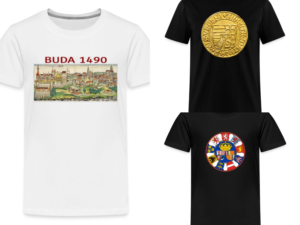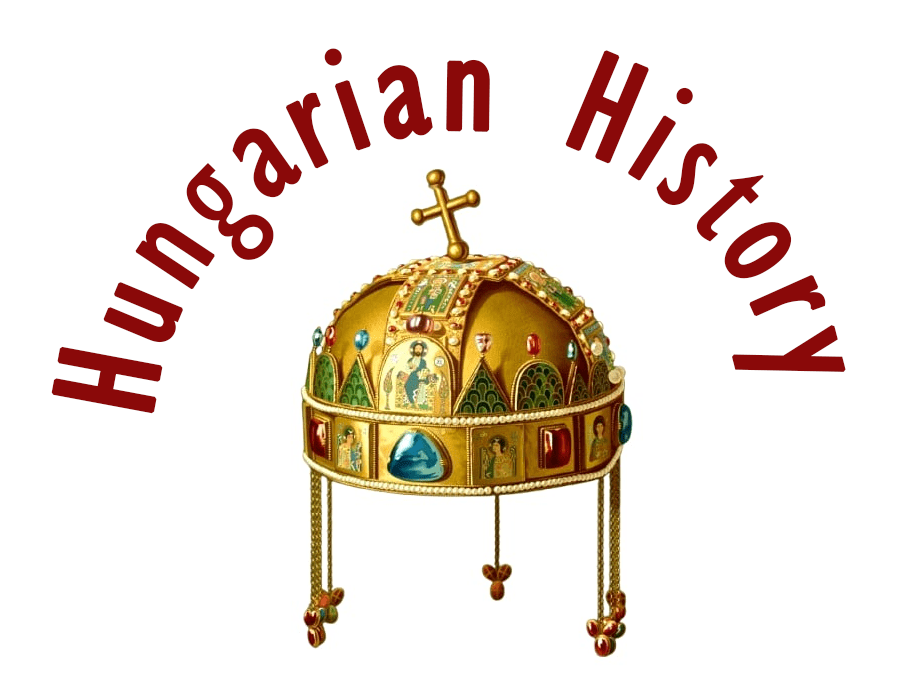“Peace be with you, chosen of Christ, I command you to cease from your troubles. It has not been given to you to accomplish what you have in mind, for your hands are stained with human blood. A Son is born of you to whom the Lord will entrust the arrangement of all these things according to the plan of divine Providence”.
(Extract from The Great Legend of King Stephen)

On 1 February 997, the last ruler who had come to the head of the Hungarian tribal confederation as a pagan, Grand Duke Géza (r. 972-997), died. In terms of merit, Géza ranks alongside his son, King Saint Stephen (r. 1000-1038), in the national pantheon, for his astute foreign policy and adoption of Christianity were unparalleled in laying the foundations of the Kingdom of Hungary.

Géza was born to one of the female relatives of Taksony (r. 955-972?) and Tonuzoba, a prince of the Pechenegs, probably around 950. His father was presumably already working to strengthen the bonds of the tribal alliance, for he married his son to Sarolt, daughter of the Gyula of Transylvania. (The “Gyula” was a title of power.) Géza gained supremacy around 972, at a crucial time, as the nomadic state was forced to abandon its campaigns against Byzantium after the defeat at Arcadiopolis in 970 when it ceased its western adventures.

More serious, however, was the fact that the country of the main ally of the Hungarians, the Bulgarian Tsar, came under the rule of the Byzantine emperor John the Tzimiskes (r. 969-976), who launched a counter-offensive, and the empire, which was enjoying its long renaissance, was now in the neighborhood of the tribal alliance.

At the same time, Otto I (l. 936-973), who founded the Holy Roman Empire in 962, sought to establish good relations with the “other empire”, which was sealed in 972 by the marriage of the future Otto II (l. 973-983) and Princess Theophanu. Although historians debate the extent to which this alliance isolated Hungary and posed a real threat, it likely reinforced Géza’s desire to gain supremacy around 972, join the family of Christian rulers, and seek cooperation with Rome.

This realization provides a logical explanation for the fact that, at the famous Imperial Assembly at Quedlinburg on Easter 973, Géza, along with many of Europe’s Christian and pagan rulers, sent an envoy of 12 nobles to Emperor Otto. This delegation is thought to have prepared the way for the baptism of the Grand Duke and his family and to have created peace by drawing a line of borderland on the right bank of the River Enns.

Although the principality soon concluded a peace treaty with the Ottos, this treaty did not in itself create an untroubled relationship with the German territories, as the Bavarian Duke Henry the Conqueror (r. 973-976/985-995) launched several attacks on Hungarian territories over the next two decades, which later resulted in the ‘border’ being drawn at the River Lajta.

Nevertheless, Géza established a stable partnership with the Imperial power, and his diplomatic flair is shown by the fact that he created peace by asking the daughter of his most ardent enemy, Gizella of Bavaria, to marry his son. This marriage proved to be crucial for the future of the Hungarian state, as it enabled Hungary to join Christian Europe with the support of the Imperial power but without giving up its independence.

Given that no sources have survived about Hungary in Géza’s time, we can learn about the internal politics of the Grand Duke from foreign annals and reports, as well as from later references. It is still disputed when and from whom Géza, who like his son was baptized István, and his family received baptism; the Grand Prince was probably baptized by St Bruno of St Gallen, who was sent to Hungary in the 970s, but Vajk (later St István) probably joined the Church thanks to the conversion work of St Adalbert.

We do not know, but we can only guess, that Géza was probably already confronting the sovereign chieftains to unite the nomadic state – since several sources point out that he had “blood on his hands” – but it is certain that the relationship with the Ottos played a major role in the successful conversion of the Hungarians.

Besides St Bruno and Adalbert, several knights from Swabian lands – such as Vecellin and Pázmány, who supported István – and merchants arrived in Géza’s West Hungarian territory, and the engagement of Vajk (later István) and Gizella around 995 further strengthened the ties with the West. The organization of the bishopric of Veszprém had already begun in the last years of the Grand Duke’s reign when the Benedictine Abbey of Pannonhalma was founded and the Greek Orthodox monastery of the Veszprémvölgy was probably built with the active participation of Sarolt, Géza’s wife.

The most important moment of the reign of Grand Duke Géza, however, was the last decision of his life, which practically ensured the survival of his life’s work: he achieved this by nominating his son István as his successor, which was against the tradition of the seniority, since after 1 February 997, according to “ancient custom”, the eldest male member of the family would have been the holder of the supreme power.

Géza was aware, however, that the person in question, Koppány, would have destroyed the foundations of the Western-style Christian state, and so he placed his son István, who was brought up in the Christian spirit, at the head of the tribal confederation, who, in the following decades, unified the country under his direct rule and brought the Hungarians into the family of European nations.

Source: Tarján M. Tamás, Rubicon
Dear Readers, I can only make this content available through small donations or by selling my books or T-shirts:
Please, support me with a coffee here: https://www.buymeacoffee.com/duhoxoxa
You can check out my books on Amazon or Draft2Digital, they are available in hardcover, paperback, or ebook:
https://www.amazon.com/dp/198020490X or at https://books2read.com/b/boYd81

My work can also be followed and supported on Patreon: Become a Patron!http://Become a Patron!
Become a Patron! and donations can be sent by PayPal, too: https://tinyurl.com/yknsvbk7


https://hungarianottomanwars.myspreadshop.com/all
Subscribe to my newsletter here: https://tinyurl.com/4jdjbfkn


